
Decodable books have been a big buzzword in education lately. But how do you know the most effective ways to use decodable readers in your classroom?
Maybe you aren’t sure how to choose the best decodable books – or what they even are!
In this post, I’ll explain how I use decodable books in Kindergarten and First Grade effectively – and no, that doesn’t mean just tossing all of your leveled texts and replacing them with decodables.
What Are Decodable Books?
Decodable books are readers that focus on a targeted phonics pattern. They are made to be highly, well, decodable for our emerging reader!
How many times have you had a student able to decode words in isolation, but freeze once they get to that word in a story? Our students need practice using new phonics patterns both in isolation and in reading and writing in order for them to reach mastery. Decodable readers allow our students to practice decoding words in context.

The above decodable reader focuses on the beginning blend fr. Since these decodable books were created for students who have just moved past the CVC phonics pattern, it uses beginning blend words that follow the CCVC pattern.
Obviously there are words that begin with fr that are more advanced, such as freezer, but you won’t see those words in these decodable books. Why? Because students haven’t learned those spelling patterns yet and wouldn’t be able to effectively decode those words.
When choosing decodable books, you want to make sure that any words that do not contain the targeted phonics skill are sight words students have already learned or contain spelling patterns previously taught.
Who Can Benefit From Using Decodable Books?
The answer is: everyone! All of your students can benefit from decodable books. It can be easy for our students to start to rely on reading strategies like looking at the picture or thinking about what makes sense. These strategies have their place, but the problem is that they focus on everything but the actual words. And we want kids reading the words!
Decodable readers basically force our students to focus on the actual words. They have to apply the phonics patterns they are learning and when they do, they experience success!
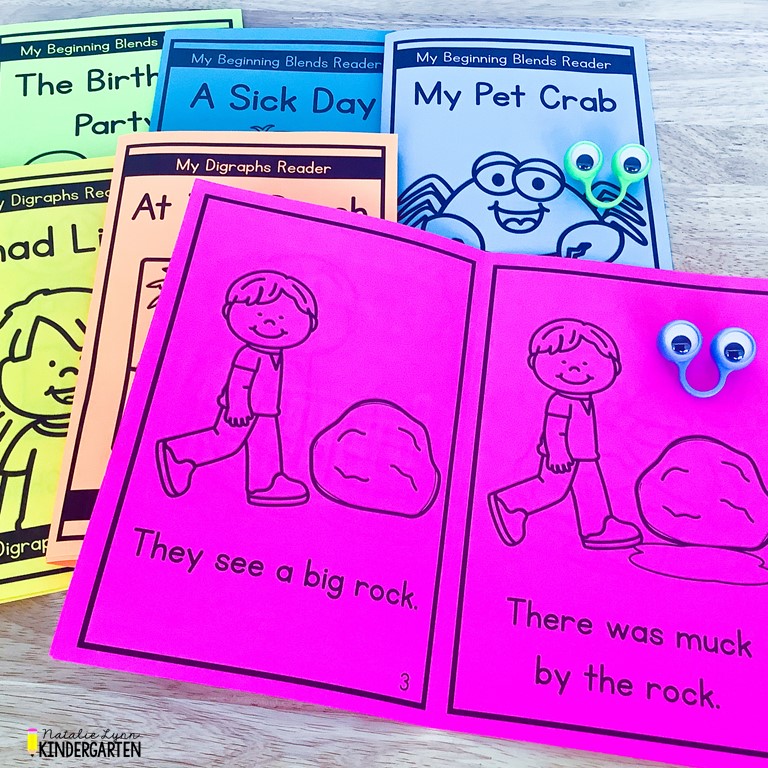
Decodable books are essential for growing strong and confident readers. They are especially helpful for students with reading disabilities. It is so important for our struggling readers to experience that success with reading.
Can You Differentiate With Decodable Readers?
Yes! You can absolutely differentiate with decodable books. Of course, you can differentiate your decodable readers by simply choosing books with the phonics pattern each reading group needs to work on.
But you can also differentiate your decodable books within a spelling pattern. You can do this by choosing books that are more or less patterned.
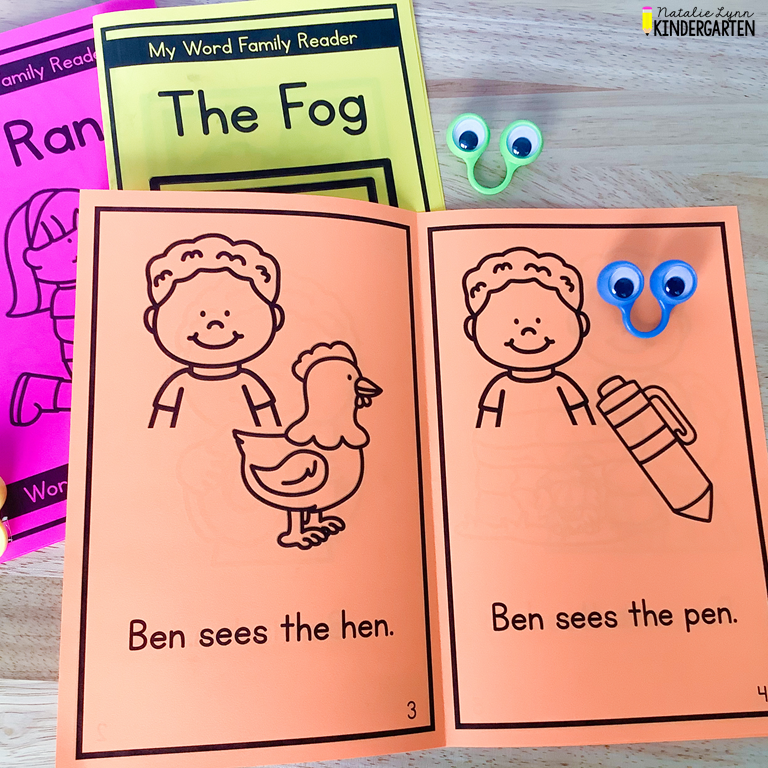
If you choose a decodable reader that is more patterned, your students won’t have to focus as much on the other words and can just focus on decoding. The downside to this is that they will be able to reply more heavily on picture clues.
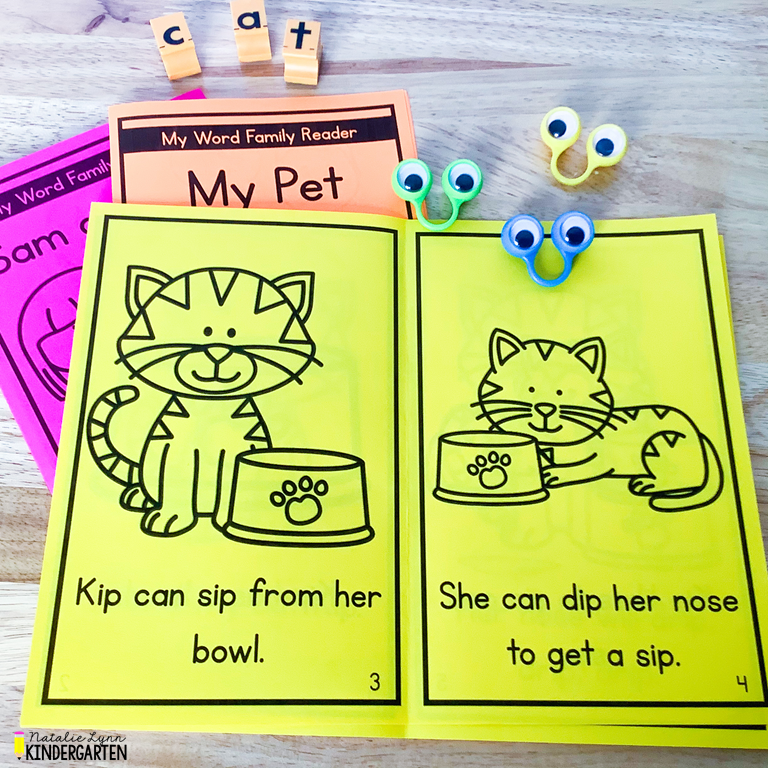
Patterned decodable readers can be a great starting point when introducing a new spelling pattern, however. They can ease students into seeing that spelling pattern in text. Once your students have experience with the patterned decodable books, you can move them into less-patterned text.
My decodable readers for K-1 come with two different levels to allow you to differentiate this way. Level one includes more patterned, simple text. Level two is less patterned and requires more decoding from students.
How To Choose the Right Decodable Books for Your Students
When choosing decodable books for your reading groups, you want to choose books that match the spelling pattern they are working on and are high interest.
You also want to choose books in which students have learned the majority of the sight words. Of course you can introduce a new sight word before you read, just like you would with leveled texts in guided reading.
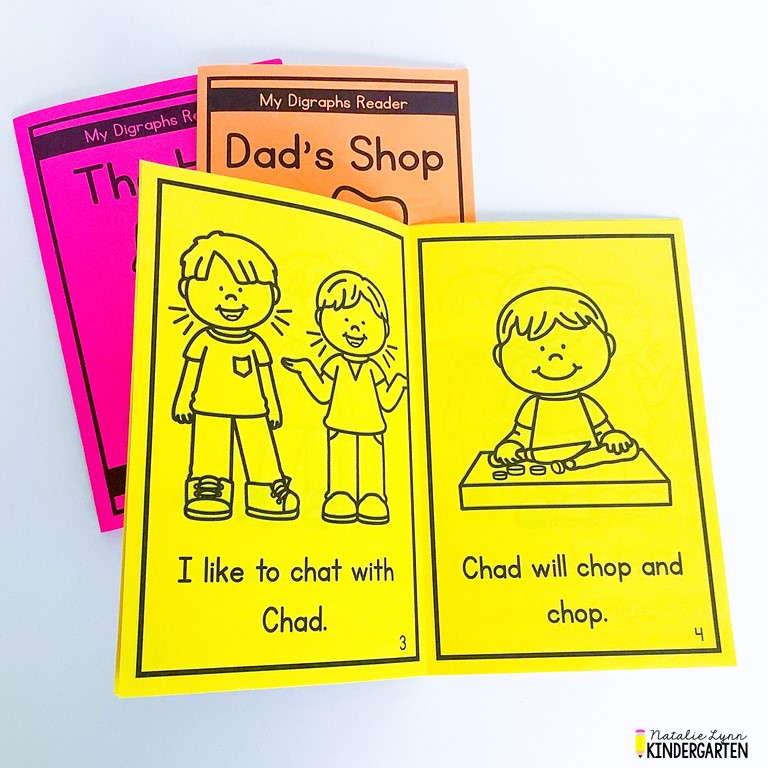
If you are just beginning a spelling pattern, you may want to choose a text that is simpler. You want the decoding to be the focus. However, once your students have some experience decoding that spelling pattern, try to choose decodable readers with more of a plot. Answering questions about the text will help our students connect to the phonics pattern in yet another way.
But are decodable books are too easy for my students? Well, the text may seem too simple, especially with 1st grade and 2nd grade readers. But most likely there are words in the leveled books at their reading level that students are not able to truly read.
Why? Our students get really good at memorizing words and relying on other reading strategies. This works really well for them at the lower reading levels.. but it becomes harder to maintain as they grow.
If you choose decodable books with the phonics skill they need to work on, your students will be able to work on decoding those words in context. You can mix up using decodable books and leveled books in your reading groups so that your students are working with texts at their reading level and working on decoding in context.
How To Use Decodable Readers in Your Classroom
Whether your are using decodable books in your small guided reading groups or using them in your whole group phonics instruction, there are a few different ways you can use these decodable readers to get the most bang for your buck.
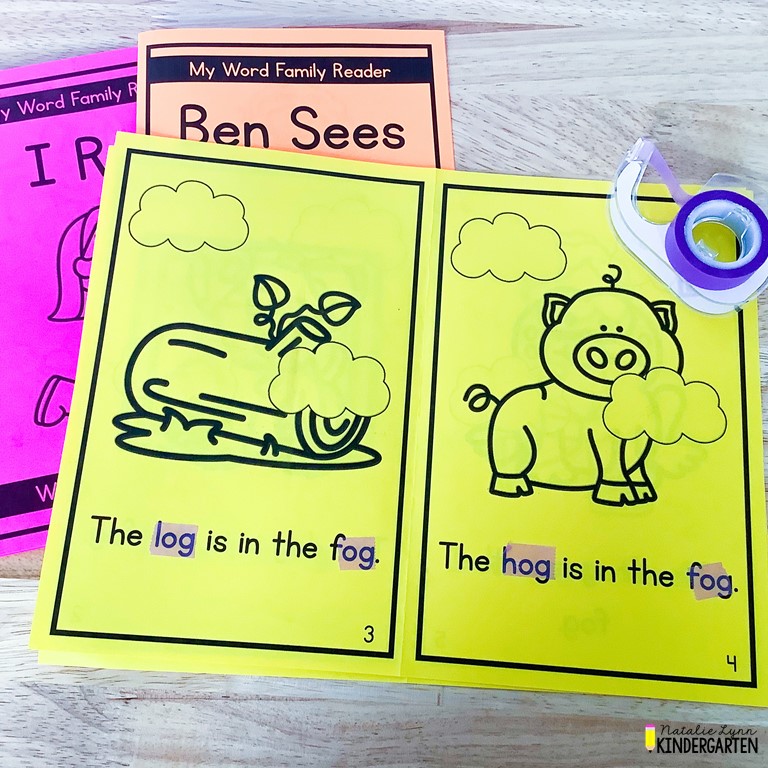
If you use the decodable books whole group, you can project them and have students come up to find the phonics pattern. You can also use them to model decoding strategies for your students.
When students interact with the text, you can have them:
- Find and highlight words in the text that fit the spelling pattern
- Read a page and then retell what happened on that page
- Reread the book for fluency
- Use reading fluency voice cards to practice reading the text with expression
- Discuss what happened in the story
- Write about the story
- Keep the decodable reader in their book box to reread again and again
- Make it a partner reading station
- Take the books home to read to family
You can incorporate your decodable books into your phonics instruction to use whole group or pull phonics small groups to work on targeted skills and reading.
If you don’t have time in your day for this (I definitely don’t), then try swapping out some of your leveled books in your guided reading groups with decodable readers. That doesn’t mean you should never used leveled readers again! Both types of texts have benefits for your students.
Looking For Decodable Books for Your Classroom?
You’re in luck! I created these decodable readers to fit the needs of Kindergarten and First Grade classrooms. There are two different levels of decodable readers included. This allows you to use the decodable books with all of your students!
These texts are high interest and super engaging for your students. The level one texts are more patterned and perfect for introducing a new phonics skill to your students. Level two has more of a plot, and each book has comprehension questions your students can answer.
These books are printable and also come formatted for use with Google Slides™ so you can use them during distance learning or send them to families without using more paper.
What are other teachers saying about these decodable readers?
”My students loved using these books to review the skills we have been working on. It has also been giving them so much confidence in their reading abilities.” – Kinsey W.
“My students have really enjoyed becoming experts with the sounds they are learning by practicing with these decodable texts!” – Sheila
Grab the decodable readers ULTIMATE growing bundle HERE!
Looking for digital decodable books? I have these NEW digital decodable readers that are formatted for Boom Cards™ and Google Slides™! These digital books are an entire lesson in one deck. They include work with decoding, reading, and comprehension.
Grab the digital decodable books HERE!
Pin this post for later:
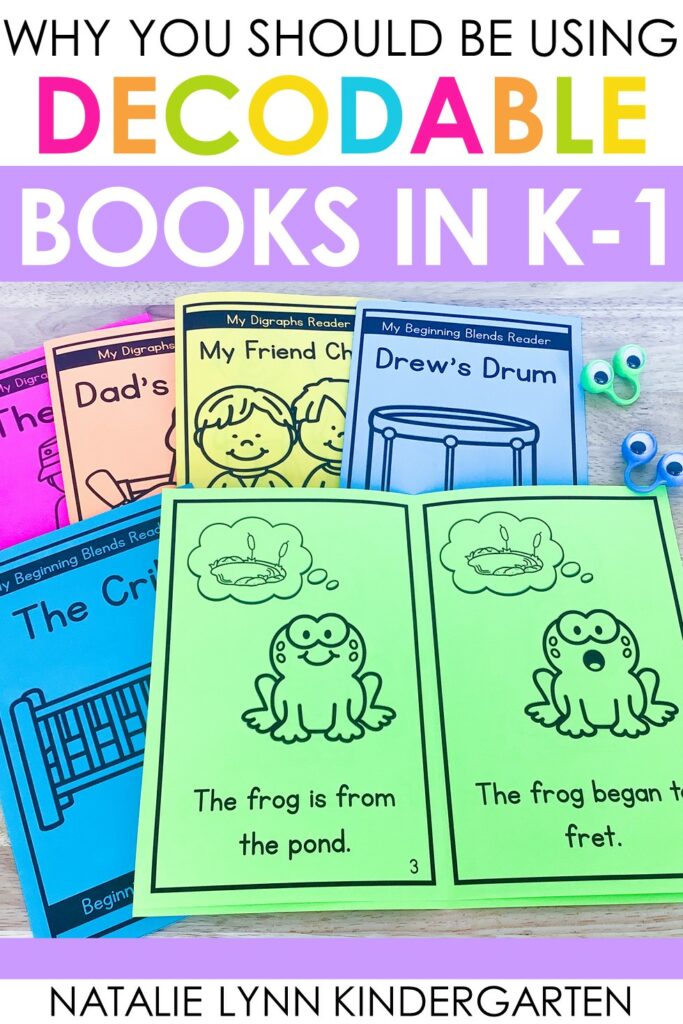



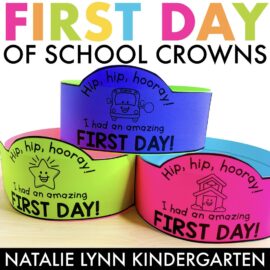
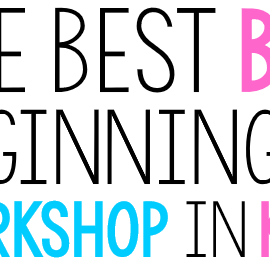

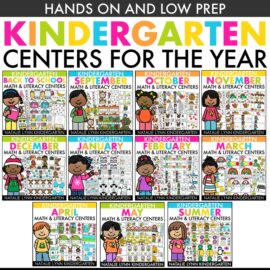
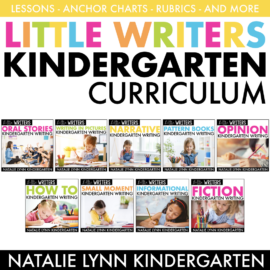
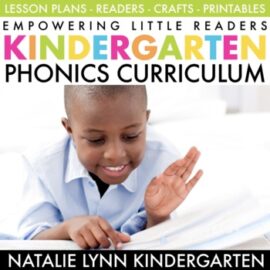
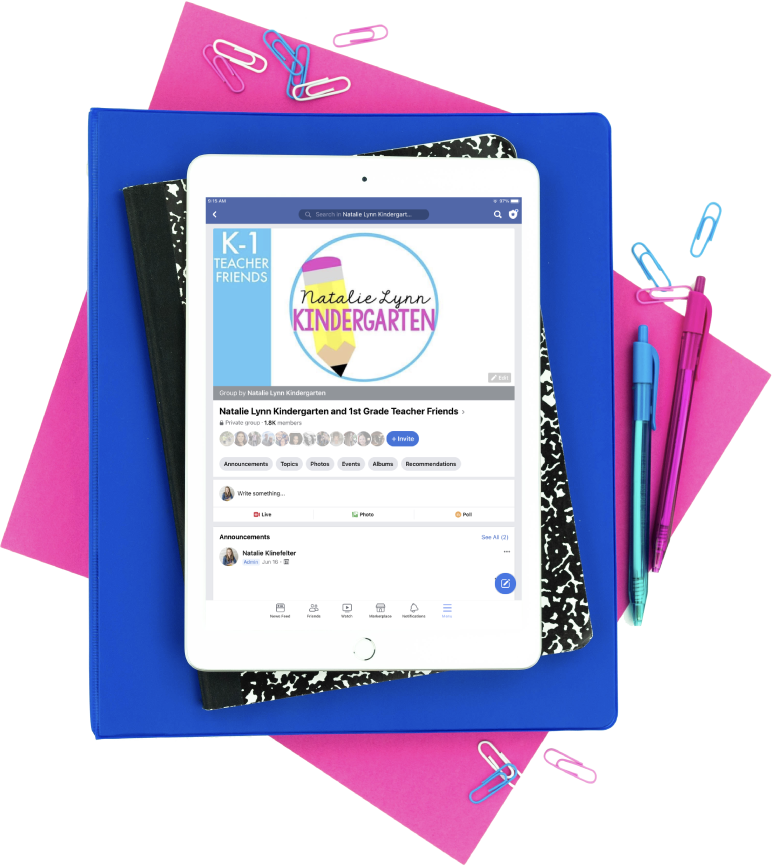

Help!
I purchased your amazing set of decodable texts and heart words the other day but I have no idea how to access them now. I thought I signed up for an account but it’s not recognizing my email.
Hi Catherine! Send me an email at natalielynnkindergarten@gmail.com and I can help you out.